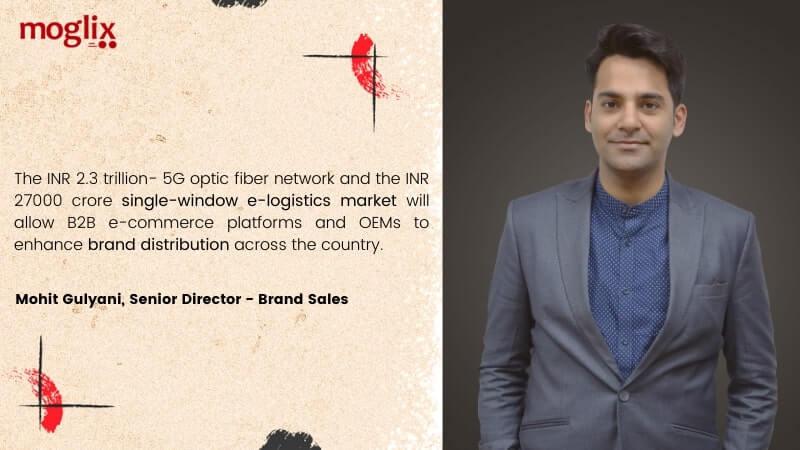Brand Distribution in 2021: Increasing Agility with Digital Channels

The next major theme for Indian manufacturing in 2021 will be brand distribution. With the global supply chain experiencing a reset to the status quo; the structural transition of the Indian economy from being consumption-driven to being a manufacturing hub, there will be new opportunities for OEMs to leverage digital channels for brand distribution.
The market opportunities in the distribution of manufactured goods will impact both India’s domestic and global trade. B2B e-commerce platforms will enable new avenues for OEMs to penetrate new geographies and address challenges of sales overheads in remote locations and transparency in their value chain.
Read: My vision for Moglix is to change the face of industrial commerce
With the global manufacturing community searching for a new address, a new strategic group of economies in the Asia-Pacific will rise. The emerging economics collectively referred to as the Mighty Five, include MITI-V i.e., Malaysia, Indonesia, Thailand, India, and Vietnam. Policy initiatives, coupled with some of India’s long-standing strategic advantages, are likely to unlock new opportunities through digital channel management and brand distribution. These include India’s planned outlay of INR 2.3 trillion in engineering, a robust 5G optic fiber network, and the INR 27000 crore single-window e-logistics market.
The combined effect of faster digital and logistical connectivity will allow B2B e-commerce platforms, logistics services providers, and OEMs to collaborate for enhanced brand distribution across the country’s length and breadth.
Listen to Moglix Podcast on Now and Next in The Automobile Industry
OEMs will be keener to explore avenues of better transparency in their value chain and cost-efficient ways to make inroads into the remotest corners of India’s hinterlands. B2B e-commerce platforms with their cutting edge technology capabilities like sales analytics are well poised to serve OEMs in this regard. Furthermore, B2B e-commerce platforms will provide fully digital distribution capabilities that have already seen an uptick in demand due to the vulnerability of offline distribution channel management.
Lastly, B2B e-commerce platforms will allow OEMs to reduce their sales overheads and tap into regions that do not seem economically feasible due to costs of first-mile/last-mile logistics, warehousing, and inventory management. B2B e-commerce platforms with pan-India networks of warehouses, logistics operators, and tech-enabled workforce will emerge as sales specialists with hybrid-inside sales capabilities.
Mohit Gulyani is Senior Director- Strategic Partnerships at Moglix
To learn more about manufacturing and supply chain trends in 2021, download our ebook titled Road to Self-Reliant Manufacturing: Procurement and Supply Chain Insights for 2021 here.
